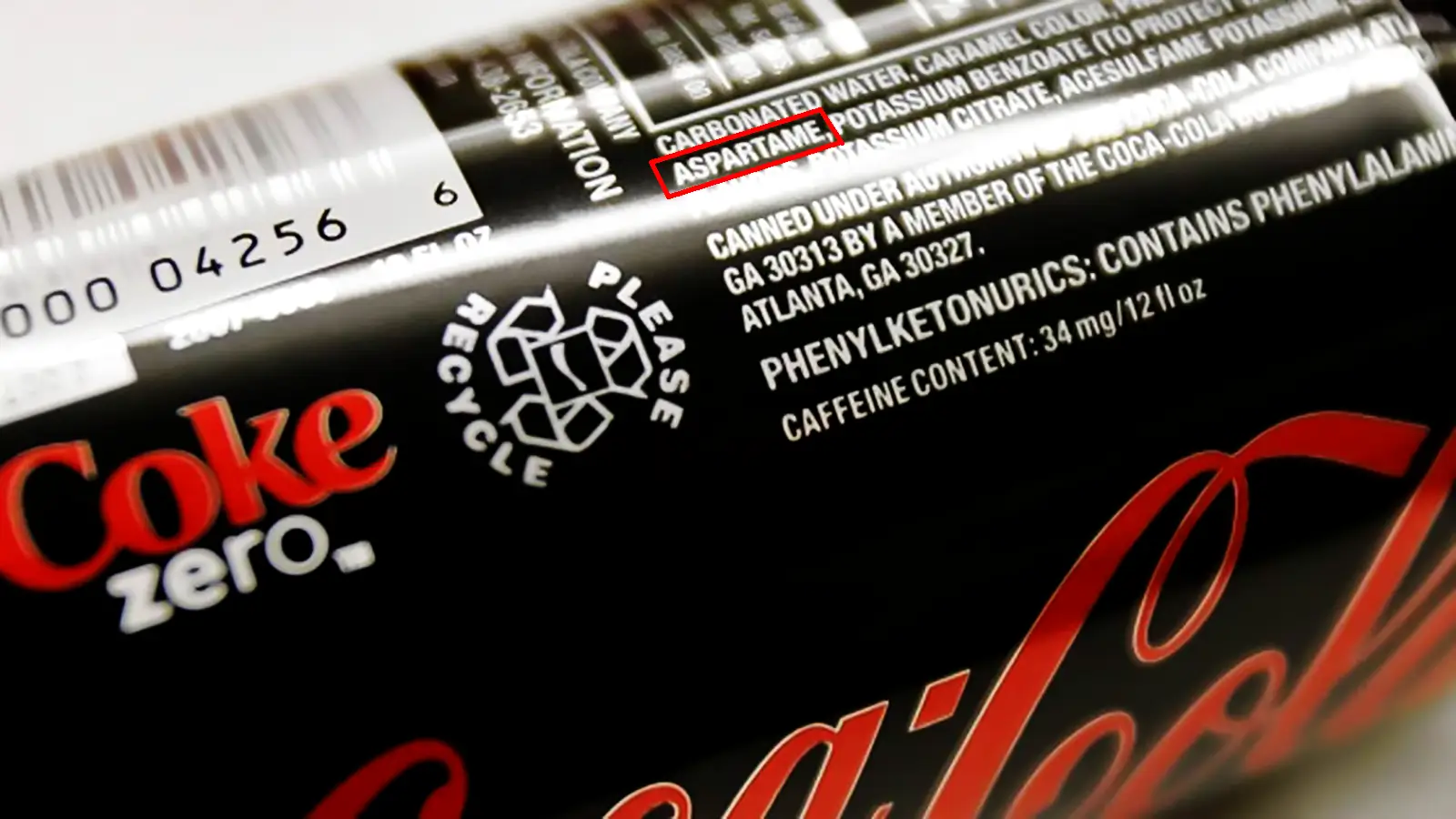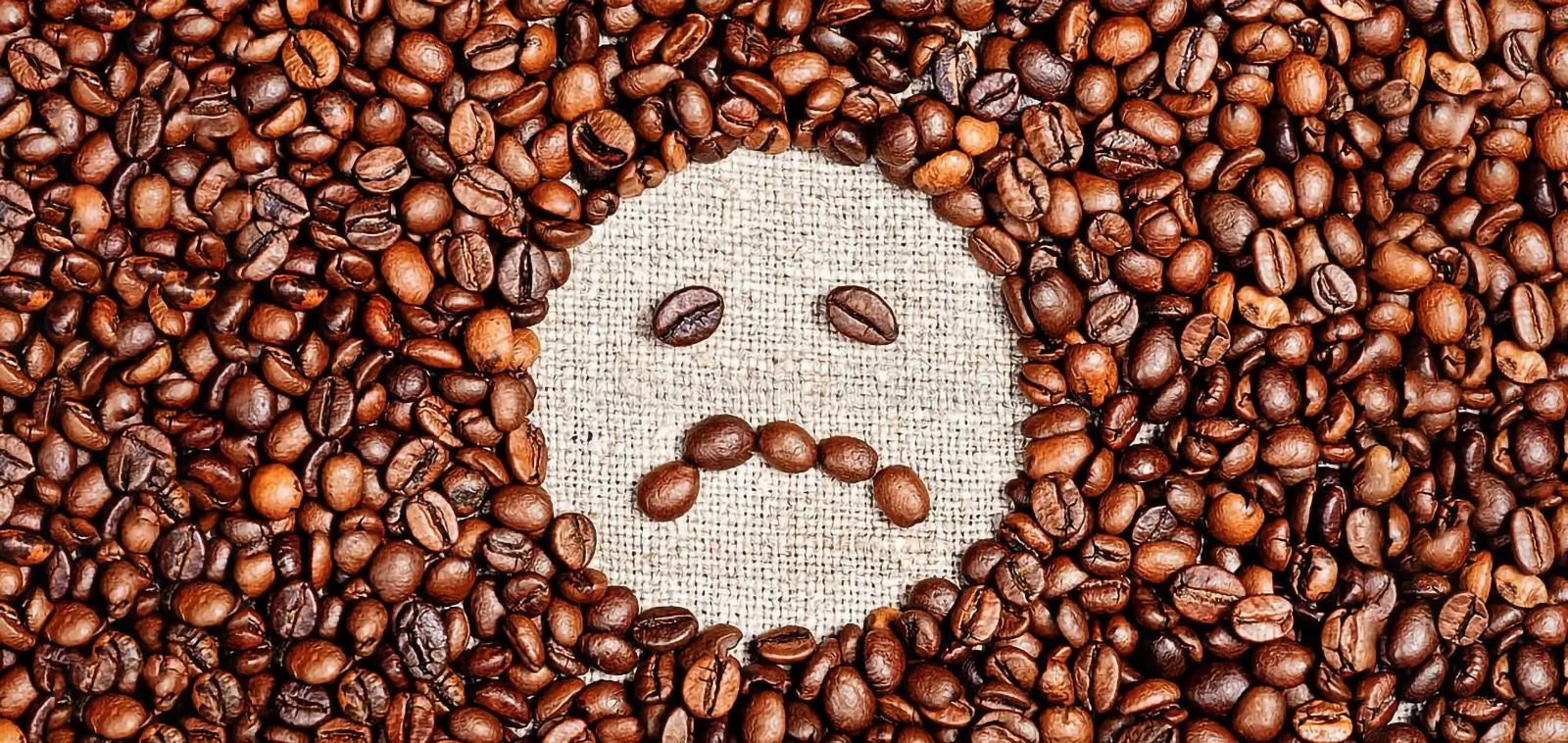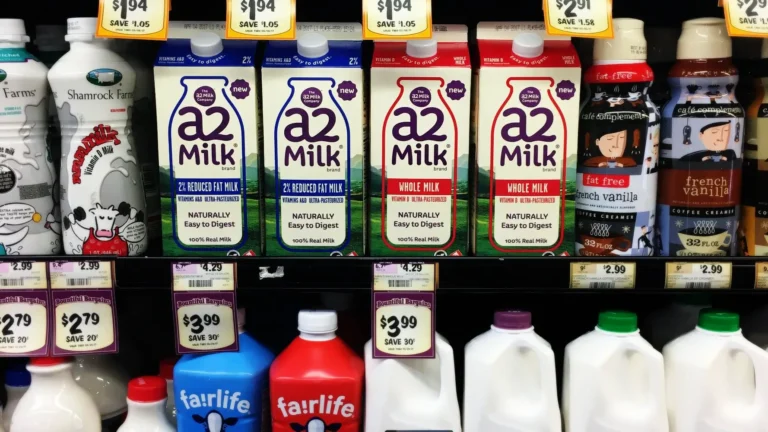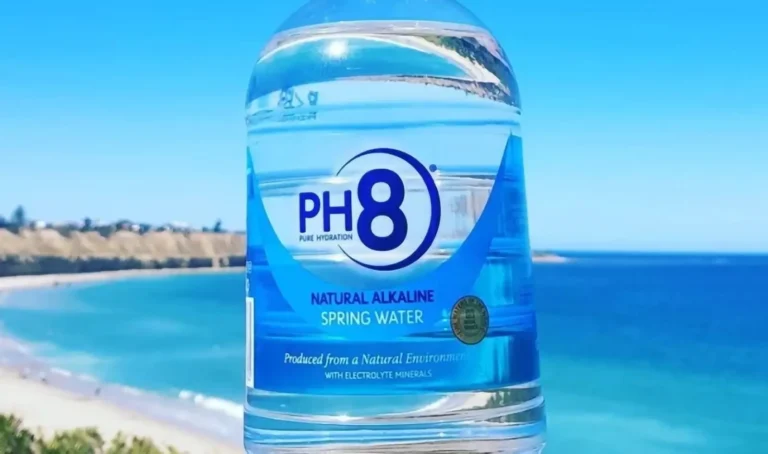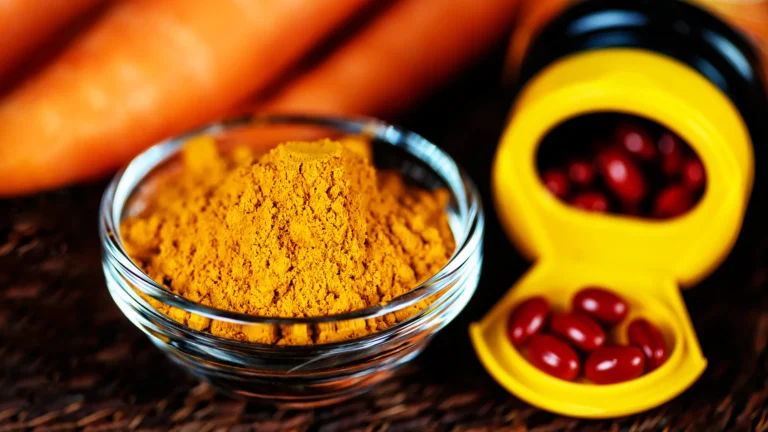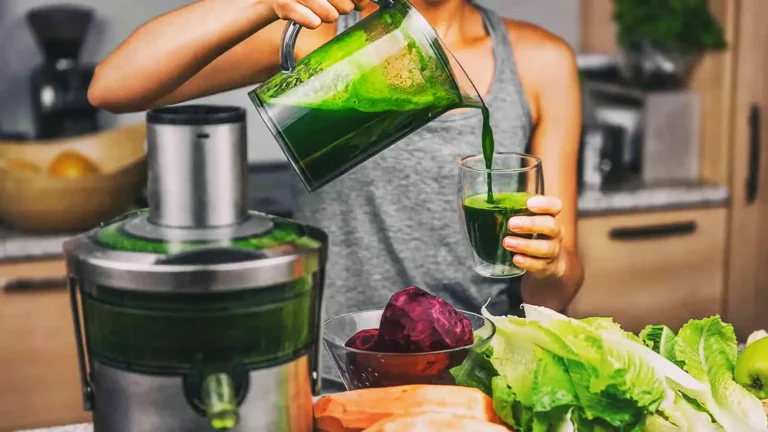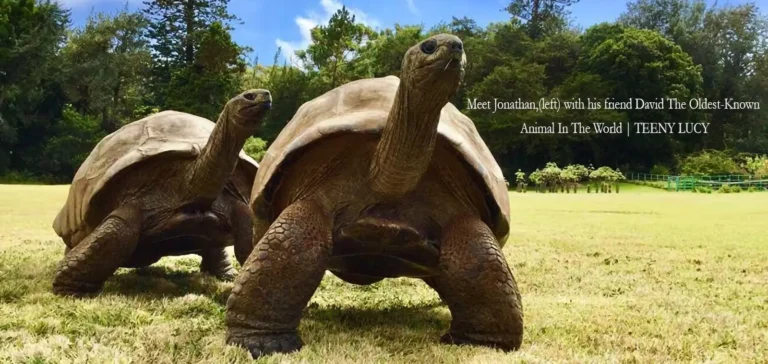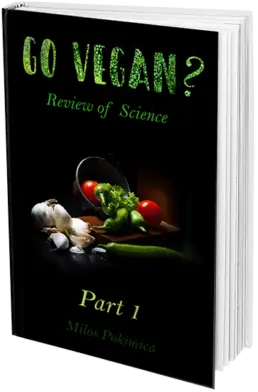Coca-Cola Company - Reseña Histórica
Si quieres saber cuál es el ingrediente secreto del jarabe de Coca-Cola. Es la Alemania nazi, los escuadrones de la muerte guatemaltecos, el neuromarketing y el trabajo infantil.
Milos Pokimica
Escrito por: Milos Pokimica
Revisado Médicamente Por: Dr. Xiùying Wáng, M.D.
Actualizado el 28 de mayo de 2023Cuando la gente habla de la industria alimentaria, piensa en Coca-Cola y Nestlé. Coca-Cola y Nestlé no pertenecen a la industria alimentaria. Ni mucho menos. Nestlé es la más grande sobre el papel porque la oligarquía no quiere que la gente normal sepa cuál es la verdadera forma de hacer negocios. Esa es la razón por la que, por diseño, estas empresas como Cargill y otras no emiten acciones públicas, ni informes anuales. Lo único cierto es que no sabemos cuál de ellas es la más grande, y seguro que no es Nestlé. De nuevo, como he escrito antes, estas empresas son más secretas que cualquier compañía petrolera, banco o servicio de inteligencia gubernamental. Sin embargo, incluso la estúpida Coca-Cola tiene el mismo patrón de comportamiento.
Si quieres saber cuál es el ingrediente secreto del jarabe de Cola.
Es la Alemania nazi, los escuadrones de la muerte guatemaltecos, el neuromarketing y el trabajo infantil.
La historia de Coca-Cola comenzó con una bebida alcohólica llamada Pemberton's French Wine Cola, creada por el farmacéutico John Stith Pemberton, que también era adicto a la morfina.
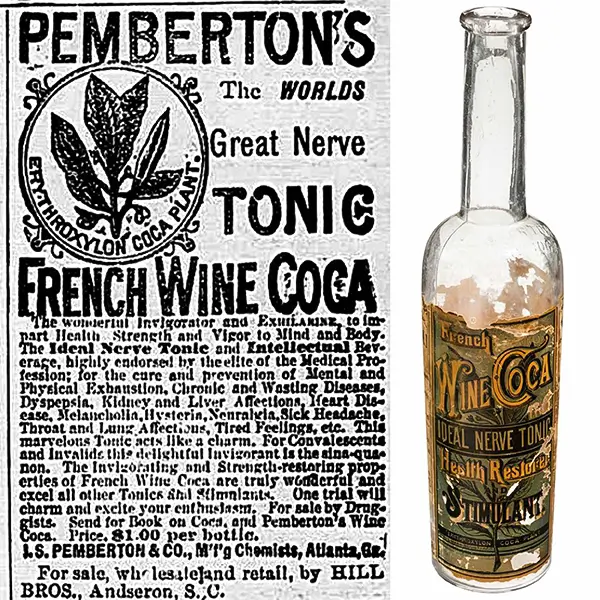
Entre sus ingredientes había una mezcla de alcohol y cocaína llamada cocaetileno, que inducía la euforia. La bebida, que se comercializaba como estimulante sexual y "un maravilloso vigorizante de los órganos sexuales'', fue prohibida en 1885 por las nuevas leyes antialcohólicas. Pemberton sustituyó el vino por jarabe de azúcar y lanzó un nuevo producto en 1886. Se comercializaba como un "tónico cerebral ideal". La Coca-Cola siguió infusionada con cocaína hasta 1903, cuando la empresa cedió ante el temor de los blancos a que se disparara el consumo de cocaína entre los afroamericanos. Según cuenta la historia, los afroamericanos empezaron a "esnifar" desde que la prohibición les privó del whisky como "nueva amenaza sureña". Gracias a la Coca-Cola, los afroamericanos tuvieron acceso a la cocaína en cantidades cada vez mayores porque la bebida se abarató y se vendió a cinco centavos cada una con la introducción de las botellas en 1899. Sin embargo, pasó algún tiempo más hasta que en 1929 Coca-Cola dejó de contener cocaína en todas partes, pero aún se le añadía, y se le sigue añadiendo, extracto de hoja de coca para darle sabor.
Coca-Cola es la única empresa del mundo, bueno en realidad Stepan Company la diferente, pero por el interés de fabricar Coca-Cola es la única empresa autorizada por el gobierno para importar y procesar hojas de coca. Stepan Company importa hojas principalmente de Sudamérica, de países como Perú y Colombia. Y todo es legal.
Si Coca-Cola puede asociarse para introducir hojas de coca en Estados Unidos, ¿por qué no podemos hacerlo el resto?
¿Existen leyes diferentes para personas diferentes? Si yo viajara a Perú e intentara ir a Estados Unidos con un pequeño lote de hojas de coca (quizá para preparar té), me detendrían los agentes fronterizos. Sin duda, a Coca-Cola le ha gustado que sea así porque la competencia por las hojas de coca haría subir los precios, lo que nunca es bueno para el negocio.
Si realmente quieres saber por qué la cocaína es la droga más cara del mercado negro es por Coca-Cola, que necesita cientos de toneladas de hojas al año.
El jarabe sólo se fabrica en EE.UU. y luego se envía a todo el mundo debido a su "ingrediente secreto". ¿Cómo es posible que un 7-up genérico o un refresco de uva, por ejemplo, puedan engañar a nuestras papilas gustativas y, sin embargo, encontrar un refresco de cola genérico capaz de imitar la maravilla que es la Coca-Cola siga siendo casi imposible? Ese es el ingrediente secreto de Cola. La loca razón por la que ninguna empresa puede emular realmente el sabor de la Coca-Cola. Porque el extracto de hoja de coca es un ingrediente que ninguna otra empresa del mundo puede utilizar. Y hacer negocios con escuadrones de la muerte guatemaltecos para asesinar a líderes sindicales a finales de los 70 y ser pioneros en el superdimensionamiento de América es sólo un extra añadido.
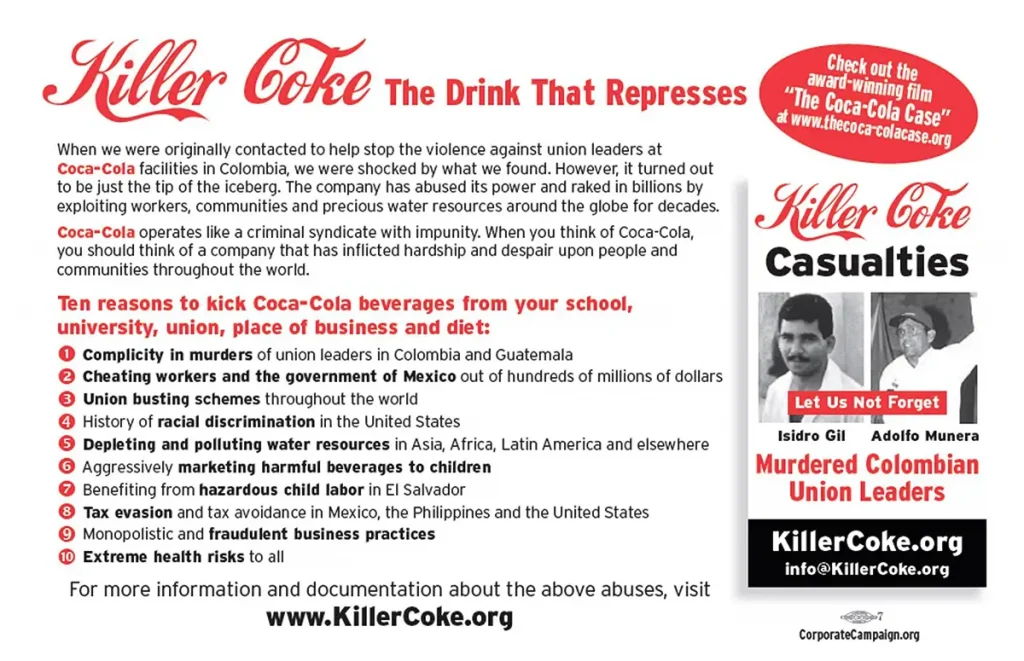
En 2001, se presentó una demanda en nombre del sindicato colombiano Sinaltrainal (Sindicato Nacional de Trabajadores de la Alimentación) ante el Tribunal de Apelación del Tercer Distrito de Florida, exigiendo una indemnización monetaria de 500 millones de dólares por la muerte de nueve trabajadores, miembros del Sindicato Nacional de Trabajadores de la Industria Alimentaria que trabajaban en la planta de Coca-Cola Bebidas y Alimentos en Carepa, en el norte de Colombia. Como "incidente" guatemalteco no fue suficiente.
Acusaron a Coca-Cola y a sus socios embotelladores colombianos de utilizar escuadrones de la muerte paramilitares para asesinar, torturar y secuestrar a dirigentes sindicales.
En la demanda se alegaba que la empresa contrató a militantes de las Autodefensas Unidas de Colombia (AUC) para asesinar a nueve miembros del sindicato, entre ellos Isidro Segundo Gil, que murió tiroteado en el interior de la planta de Coca-Cola. El acceso físico de los paramilitares a las fábricas de botellas es imposible sin el conocimiento de la empresa, ya que todas las plantas de Coca-Cola cuentan con cámaras y seguridad privada. El juez federal José E. Martínez avanzó en el caso contra dos embotelladoras de Coca-Cola: Bebidas y Alimentos y Pan-American Beverages, pero no contra la propia Coca-Cola. El juez Martínez desestimó posteriormente las demandas restantes contra los dos embotelladores, en parte porque las plantas embotelladoras colombianas no eran propiedad de la empresa Coca-Cola.
Los encargados de las relaciones públicas no quieren que se manche el nombre de su marca, así que les gusta confundir el tema como sea. Coca-Cola dice que los asesinatos de los sindicalistas colombianos no son su responsabilidad porque no son empleados directos de Coca-Cola. La razón por la que Coca-Cola tiene otras empresas embotellando el producto en diferentes países del mundo es exactamente ésta.
Renuncian a una pequeña parte de los beneficios a cambio de una negación plausible. Estrategia bien diseñada.
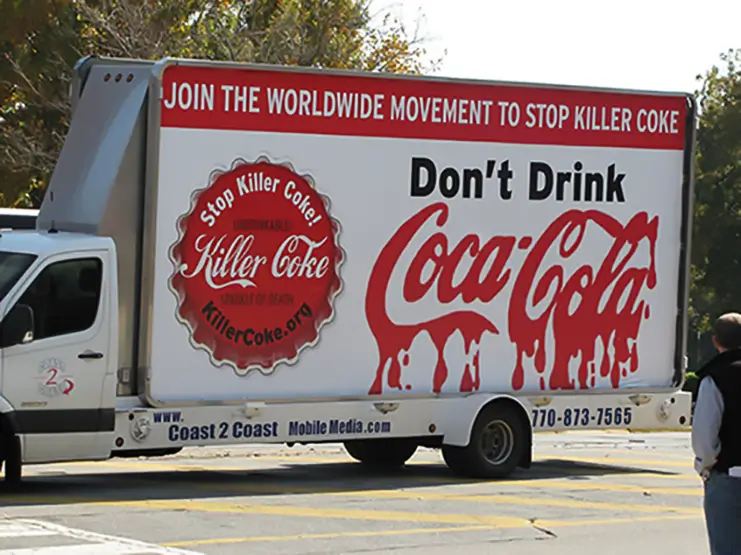
No quieren verse arrastrados a los tribunales si ocurre algo, y para ellos no se trata realmente de dinero. Se trata de imagen de marca y marketing. Están vendiendo el sueño. Incluso el Papá Noel rojo es un invento suyo. Algunas investigaciones y escáneres cerebrales han descubierto que, por ejemplo, cuando los estadounidenses viajan y no se sienten "seguros" en algún país del tercer mundo. Cuando ven el cartel de Coca-Cola, les produce un efecto tranquilizador. Esto se debe a que desde pequeños han sido condicionados a asociar los buenos sentimientos con el símbolo de Coca-Cola.
Se descubrió que la propia Coca-Cola había investigado a fondo algo llamado neuromarketing.
A los expertos en marketing les gusta llamarlo botón de compra. Condiciona inconscientemente el comportamiento a través de la asociación. Nunca has bebido simplemente un líquido azucarado y difuso llamado Coca-Cola. El sabor y la percepción del mismo es una percepción compuesta que tu cerebro construye a partir de un montón de piezas de cosas, incluidas las emociones que se asocian subconscientemente con el mensaje de la marca y otras cosas con las que se ha asociado el mensaje de la marca. Las marcas tienen sabor.
Ejemplos de neuromarketing son "Saborea la sensación" y "Abre la felicidad".
A continuación, Neuro-Insight muestra cómo responde el cerebro de los espectadores al anuncio del Chico de la Piscina (www.adnews.com.au/news/applying-neuroscience-to-cannes-winning-work-coca-cola-pool-boy).

En realidad, la violencia, los abusos y la explotación contra los trabajadores y las comunidades de Coca-Cola se han descubierto también en muchos otros países, especialmente en China, El Salvador, Guatemala, India, México y Turquía. Además de la explotación de los trabajadores, se ha implicado a Coca-Cola en la explotación infantil al beneficiarse del trabajo infantil peligroso en los campos de caña de azúcar de El Salvador y al succionar todas las aguas subterráneas de la India, creando una catástrofe para los aldeanos locales.
Se necesitan dos litros de agua para crear un litro de Coca-Cola. En 2004 Human Rights Watch dijo que si Coca-Cola quería evitar la complicidad en el trabajo infantil, debía reconocer su responsabilidad de respetar los derechos humanos. Por encima de todo, Coca-Cola es imagen y va a gastar más de dos mil millones de dólares en marketing para convencerte de que "la vida sabe bien". Gracias en parte a las campañas de marketing de Coca-Cola, el superdimensionamiento de la El problema de la obesidad en EE.UU. y su balance final han llevado a una situación en la que los refrescos azucarados carentes de valor nutritivo son una de las principales fuentes de calorías en la dieta estadounidense.
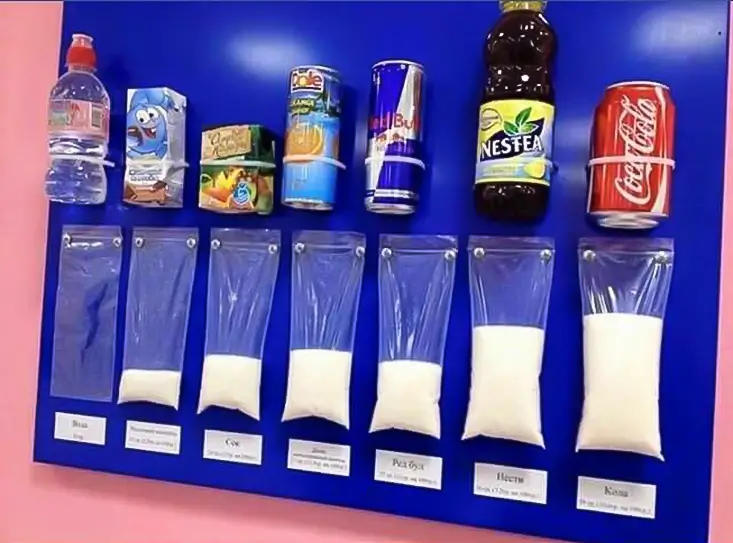
En Estados Unidos, más del 80% de los condenados a muerte piden Coca-Cola para su última comida.
Además, cuando se venden refrescos que contienen cafeína, como la Coca-Cola, a niños pequeños, se les crea una adicción precoz a los estimulantes.
La cafeína (que es una neurotoxina) puede tener un efecto perjudicial en el desarrollo del cerebro infantil. No se trata sólo de una cuestión de obesidad. Cada lata de Coca-Cola de 330 ml contiene 34,5 mg de cafeína y las Coca-Cola light aún más. Eso es suficiente para estimular los antojos y alterar el comportamiento en un adulto, pero si se da Cola a los niños, se volverán hiperactivos y adictos. El cerebro de los niños es más sensible a los efectos de la cafeína que el de los adultos. La cafeína puede provocarles hiperactividad inmediatamente después de beberla, lo cual es obvio y hay demasiado azúcar refinado en la coca también les da una explosión de energía. Sin embargo, también puede ponerles nerviosos y ansiosos, agravar los problemas estomacales y crear problemas de sueño a largo plazo. Las pruebas no demuestran que la cafeína atrofie el crecimiento, pero puede volverlos adictos a ella. Ocurre lo mismo que en los adultos. En los casos de consumo diario de Coca-Cola infusionada con cafeína el cerebro compensa en espera de la toxina y hasta que el niño no la bebe va teniendo niebla cerebral, poca energía, problemas de atención, y puede estar nervioso. Igual que cualquier otro drogadicto adicto a las anfetaminas. Si alguien tiene predisposición a la ansiedad puede agravar la situación creando comportamientos de tipo neurótico y estrés crónico. Los niños que tienen dificultades de atención como el add (Trastorno por Déficit de Atención) y el Trastorno por Déficit de Atención con Hiperactividad (TDAH) deben evitar cualquier estimulante como la cafeína. Una combinación de cafeína, azúcar y excitotoxinas como aspartamo y glutamato monosódico (msg) puede exuberar los síntomas en los niños que ya están en el lado de ADD en una enfermedad en toda regla. Al niño se le recetaría el verdadero fármaco a base de anfetaminas llamado Ritalin. Los niños sufrirán efectos de abstinencia al igual que los adultos si no lo tienen, como mínimo dolor de cabeza. Es un grave problema de salud pública.
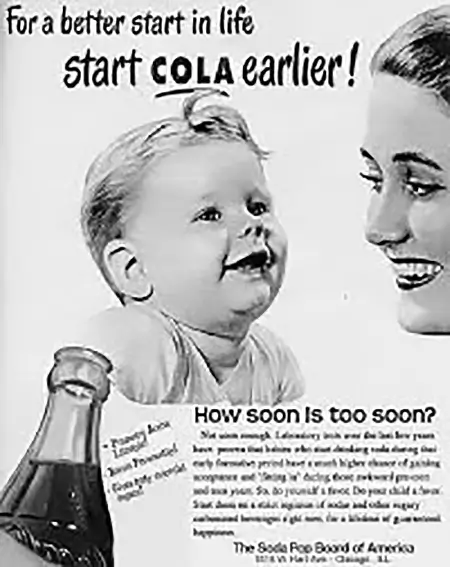
Para aumentar el problema de estas bebidas con cafeína está el hecho de que muchas de ellas están llenas de azúcar. Eso es mala nutrición. Si un niño bebe más de una bebida azucarada al día, está abocado a la obesidad. Como no hay fibra para ralentizar la digestión, el nivel de azúcar en sangre aumentará rápidamente y luego se desplomará, creando hipoglucemia. Y el niño buscará otra Coca-Cola. Cuanto antes se haga adicto el cerebro de su hijo a estimulantes como la cafeína y el azúcar refinado, antes empezará la obesidad y más probable será que le siga hasta la edad adulta.
Y a la industria le encanta. El consumo de bebidas azucaradas con cafeína crea hábito.
Es muy inteligente poner cafeína en una bebida azucarada y venderla a los niños. Además, dadas las investigaciones que se han llevado a cabo en modelos animales, es posible que el consumo habitual de cafeína provoque una sensibilización cruzada del sustrato neural de recompensa a las drogas ilícitas, lo cual es un problema que va más allá de la obesidad. Si le das Coca-Cola a tus hijos, no me creas sin más, investiga por tu cuenta y mira qué es lo mejor para ti. Puedes leer esta reseña si quieres (Temple, 2009).
¿Creemos que Coca-Cola no lo sabe? La cafeína siempre estuvo en la fórmula, no "sólo" la cocaína. Dos ingredientes básicos que están grabados en el nombre de Coca-Cola son las hojas de coca y la nuez de cola. La nuez de cola contiene cafeína. Cuando echaron la cocaína, mantuvieron en la fórmula la segunda mejor droga estimulante legal que pueden utilizar, la cafeína.
Coca-Cola afirma que la cafeína es parte integrante de su complejo sabor, pero es mentira. La cafeína no tiene sabor.
No podemos distinguir entre bebidas con cafeína y sin cafeína. Está ahí para modificar el comportamiento del consumidor. Coca-Cola dijo una vez que captar consumidores de instituto significaba mantenerlos durante 50 o 60 años. Su verdadero objetivo que quieren "captar" son en realidad los niños.
Coca-Cola quiere comprar un mundo de Coca-Cola y ¿por qué? Bueno, dicen que quieren difundir la paz, el amor y la fraternidad a todo el mundo. Sin embargo, en realidad utilizaron la Segunda Guerra Mundial para establecer su dominio en un mercado global.
Tras el ataque a Perl Harbor por cuenta del gobierno estadounidense, es decir, con dinero de los contribuyentes, los empleados de Coca-Cola fueron vestidos con uniformes del ejército y se les dio el nombre completamente inventado de observadores técnicos. Luego fueron enviados por todo el mundo para establecer 64 plantas embotelladoras detrás de las líneas. Después del ataque a Perl Harbor con el dinero de los contribuyentes, los empleados de Coca-Cola se vistieron con uniformes del ejército y se les dio el nombre completamente inventado de observadores técnicos. Luego fueron enviados por todo el mundo para establecer 64 plantas embotelladoras detrás de las líneas. Este plan de acción les permitió expandirse y hacerse con la totalidad de los mercados y convertirse en monopolistas en todas las economías devastadas por la guerra.
Con la ayuda del ejército estadounidense, se expandieron hasta convertirse en el líder mundial en la producción de refrescos poco después de la Segunda Guerra Mundial.
Vuelve a leer esta frase.
Con la ayuda del ejército estadounidense, se expandieron hasta convertirse en el líder mundial en la producción de refrescos poco después de la Segunda Guerra Mundial.
Cuando el interés privado controla la conducta de un gobierno supuestamente elegido democráticamente y del ejército, es una definición directa de fascismo.
Hoy se puede estar en cualquier lugar del planeta, excepto en Corea del Norte y Cuba, y conseguir una Coca-Cola a la vuelta de la esquina, incluso en lugares donde no hay agua potable ni electricidad. Coca-cola tampoco tuvo problemas con los nazis. Fue una de las tres bebidas oficiales patrocinadoras de los Juegos Olímpicos de Berlín de 1936.
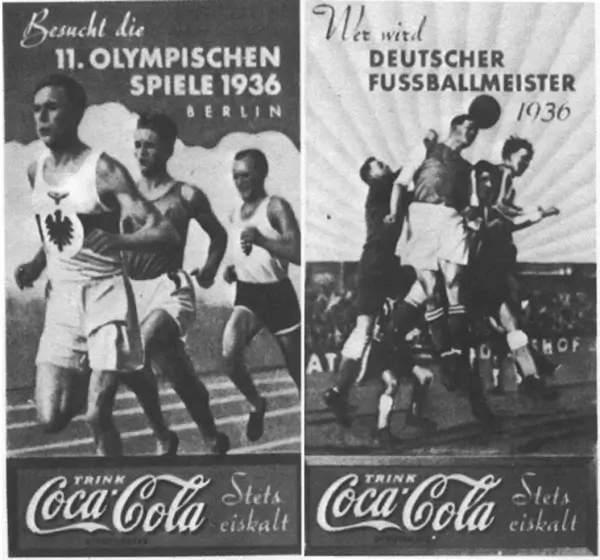
La publicidad y el embotellamiento y la rápida expansión para cubrir todo el mercado alemán bajo Hitler. Las empresas estadounidenses reconstruyeron Alemania después de la Segunda Guerra Mundial y apoyaron al régimen nazi en sus inicios y, cuando estalló la guerra, encontraron la manera de mantener el negocio. General Motors pudo conservar Opel (una filial propiedad al 100% de GM) y seguir fabricando básicamente la mayoría de los tanques alemanes que se utilizaron en la guerra. General Motors fue notablemente más importante para la maquinaria de guerra nazi que Suiza. El "enemigo" conducía camiones fabricados por Ford y Opel y pilotaba aviones de guerra construidos por Opel. Ford pudo seguir con lo suyo. Ya sabemos sobre Standard Oil e IG Farben. Mantuvieron su negocio. IBM pudo mantener su actividad y seguir produciendo ordenadores para los campos de exterminio. Los nazis los utilizaron en Auschwitz y otros lugares para rastrear a los reclusos judíos (las máquinas de tarjetas perforadas Hollerith se parecen más a las máquinas de escribir que a los ordenadores). A petición de los nazis, IBM inventó el censo nacional. Miles de personas fueron contratadas por IBM y colocadas en un almacén gigante. La gente iba de puerta en puerta y rellenaba los formularios del censo, incluyendo religión y residencia. Toda esta información se introducía en tarjetas perforadas. Todos los bancos también utilizaban tarjetas perforadas de IBM, por lo que la confiscación de los bienes y negocios era pan comido. El tatuaje de Auschwitz es el número de IBM. IBM también desarrolló un programa especial a petición del régimen nazi por el cual todas las habilidades se pusieron en un conjunto de tarjetas para que pudieran cruzar eso contra donde se necesita mano de obra esclava para que puedan trabajar a los presos hasta la muerte antes de la cámara de gas.
Sin embargo, ¿qué pasa con empresas como Coca-Cola? Como necesitaban su "ingrediente secreto" en forma de extracto de hoja de coca, no podían seguir con lo suyo. Así que lo que hicieron fue inventar una nueva bebida que pudieran producir con ingredientes locales fabricados en Alemania. Esa bebida era Fanta Orange para los alemanes.
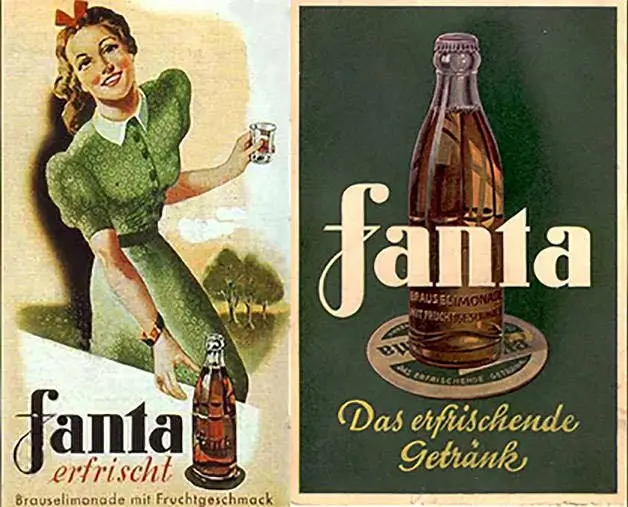
Llamada Fanta por la palabra alemana que significa fantástico. Cuando los nazis llegaron al poder en 1933, el negocio de Coca-Cola en Alemania ya estaba en auge. La dirección de un hombre llamado Max Keith ayudó a la empresa a adaptarse y expandirse bajo el régimen nazi. Renovó la marca Coca-Cola en el país e impulsó las ventas incluso antes del régimen nazi. La Cola era tan conocida y aceptada para beber como lo era en Estados Unidos. Para cuando Adolf Hitler ascendió al proverbial trono en 1933, las ventas de Coca-Cola habían pasado de 6.000 cajas al año a 100.000. Cuando los nazis llegaron al poder, para Cola tampoco supuso ningún problema hacer negocios con ellos. No tienen ningún problema con la ideología racista nazi mientras puedan hacer muchas ventas. En los Juegos Olímpicos de Berlín de 1936, por ejemplo, Keith se aseguró de que los asistentes tuvieran toda la Coca-Cola que pudieran desear. Sin embargo, los intereses de la Coca-Cola Company se vieron perjudicados ese mismo año cuando el régimen nazi empezó a restringir seriamente las importaciones de naciones extranjeras para proteger la economía alemana, y en la lista estaba el jarabe de Coca-Cola como producto no alemán.
Sin embargo, el director de la Coca-Cola Company se comunicó por medio de un tercero para convencer a Hermann Göring, segundo al mando de Hitler, de que permitiera la importación de este jarabe. En este punto, Cola estaba tratando directamente con los nazis desde el punto de vista político. Las campañas publicitarias se esforzaron por convencer a la población bebedora de cerveza de que las bebidas gaseosas eran una alternativa para el obrero mientras trabajaba y los eslóganes instaban a la mano de obra industrial a dejar las herramientas y beber una refrescante botella de Coca-Cola.
Cada vez que el ministro de propaganda Joseph Goebbels reservaba el Sportpalast para exhibiciones masivas de retórica, aparecían vallas publicitarias de Coca-Cola en el exterior, justo donde hacían cola los fieles del partido. Poco después, en 1937, Coca-Cola recibió un golpe adicional en sus intentos de vender sus productos en Alemania cuando un funcionario alemán de una empresa de refrescos rival, Afri-Cola, empezó a distribuir fotos de tapones de botellas de Coca-Cola procedentes de Estados Unidos que mostraban los caracteres hebreos que la identificaban como Kosher.
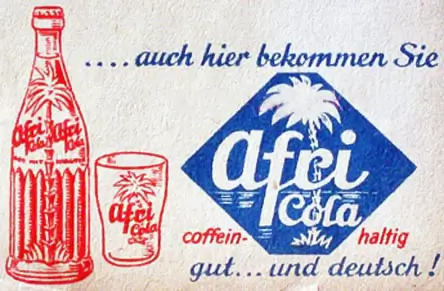
Utilizaron esto como prueba para afirmar que un judío dirigía en secreto la empresa Coca-Cola. Un embotellador bávaro de agua de manantial que sufría una pérdida de beneficios también participó en el acto, escribiendo al Ministerio de Alimentación y Agricultura en Berlín para opinar que
"Sería interesante saber si el capital judío está activo en Coca-Cola GmbH".
Las ventas se hundieron y el cuartel general nazi canceló sus pedidos, lo que obligó a Keith a negar cualquier conexión judía en un anuncio publicado en la hoja de propaganda del partido, Der Stuermer. He aquí un par de ejemplos de primera plana en los que Cocke hizo sus anuncios de neuromarketing "taste the feeling".



Para contrarrestar aún más esta idea, y la consiguiente pérdida de beneficios de los consumidores alemanes, Keith empezó a tachar a la Coca-Cola Company en Alemania de pro-nazi de forma agresiva.
En una convención nazi, en la celebración Keith ordenó un "Sieg Heil" masivo en honor del 50 cumpleaños de Hitler, para conmemorar
"Nuestra más profunda admiración y gratitud por nuestro Führer, que ha conducido a nuestra nación a una brillante esfera superior".
También se dirigió específicamente a las Juventudes Hitlerianas, intentando ganarse a la generación más joven de nazis como una política estándar de Coca-Cola de marketing dirigido a los niños para crearles adicción a una edad temprana. En una ocasión, en la Reichsausstellung Schaffendes Volk de Düsseldorf, una exposición que celebraba los logros del trabajador alemán bajo el régimen nazi, Coca-Cola se coló en el plano de este festival de propaganda con un tren en miniatura para los niños, una planta embotelladora a escala que podía lavar, tapar y llenar 4.000 botellas a la hora y un mostrador de servicio de 16 metros de largo que vendía Coca-Cola helada a los estupefactos clientes. En medio del espectáculo, el propio Hermann Göring se detuvo para disfrutar de un vaso de la bebida, momento que fue captado por un fotógrafo de la empresa.
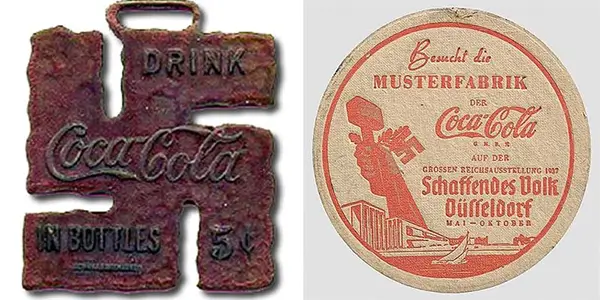
Con la guerra desarrollándose en Europa, a Keith le preocupaba que su negocio vinculado al extranjero pudiera ser nacionalizado y que le metieran en la cárcel. Gracias a sus contactos en el Tercer Reich, fue nombrado supervisor de todas las fábricas de refrescos de Alemania y de todos sus territorios conquistados. Pronto dirigió la empresa en Italia, Francia, Holanda, Luxemburgo, Bélgica y Noruega. En aquella época, Coke vendía unos 4,5 millones de cajas al año en la Alemania nazi. Sin embargo, en 1940, a medida que avanzaba la Segunda Guerra Mundial, Keith empezó a preocuparse por las limitaciones a la importación. Preocupado, fabricó un nuevo sirope con ingredientes locales para utilizarlo si no podían acceder al sirope oficial de Coca-Cola procedente de Estados Unidos. Para conjurar una nueva bebida utilizaron fibras de manzana de cosecha propia sobrantes del proceso de elaboración de la sidra y suero de leche.
Al principio, con un suministro cada vez menor de Coca-Cola, Keith trabajó para asegurarse de que sus refrescos sólo fueran a parar a los hospitales para soldados heridos que eran especialmente miembros del Partido Nazi.
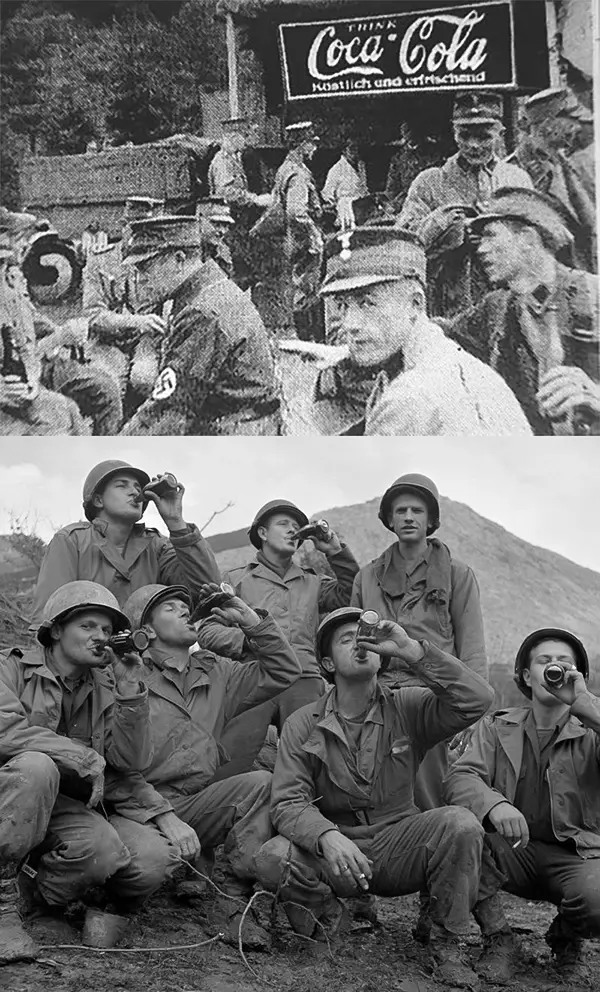
Cuando se les acabó la Coca-Cola, la empresa empezó a vender Fanta, que tuvo un éxito arrollador entre la población alemana. En 1941, Keith utilizó sus contactos políticos para eludir la prohibición del azúcar. Fanta sabía mejor que las bebidas de la competencia y se hizo muy popular. Las amas de casa incluso la utilizaban para condimentar sopas y guisos. En 1943 se vendieron 3 millones de cajas.
Al finalizar la guerra en 1945, los "observadores técnicos" asumen la administración de la industria alemana.
Keith abrazó a los T.O.s, pero éstos se negaron a contratarle, y uno de ellos le llamó "un segundo Hitler". La Coca-Cola Company recuperó el control de su división alemana y, a pesar de ser expulsada por los militares estadounidenses de ocupación por considerarla colaboradora de los nazis, Woodruff readmitió a Keith. En Atlanta, los estadounidenses lo elogiaron como a un héroe por mantener viva la empresa en Alemania.
El vicepresidente de ventas de la empresa, Harrison Jones, elogió a Keith calificándolo de "gran hombre" por actuar en circunstancias extremas. De hecho, se le recompensó por todo el buen trabajo realizado para Coca-Cola, nombrándole finalmente jefe de Coca-Cola para toda Europa (algunos embotelladores rebeldes se referían a él como "Super-Führer"). La producción de Coca-Cola se restableció rápidamente, y la Fanta dejó de fabricarse por el momento. En abril de 1955, Coca-Cola reintrodujo Fanta con una nueva receta, esta vez como bebida con sabor a naranja.
Revivieron el nombre en gran medida porque era conveniente. Coca-Cola ya tenía los derechos de autor y creo que pensaron que nadie prestaría atención a la historia. No mencionarán esto, ni una palabra, en el museo World of Coca-Cola. Cuando se les pregunta, la gente de relaciones públicas de Coca-Cola hoy en día y, por ejemplo, los hechos de falsa verdad-sitios como Snopes le dirá que la verdad real de verificación de hechos es que:
"Fanta fue la creación de un hombre de Coca-Cola nacido en Alemania que actuaba sin dirección desde Atlanta". Esta es una cita de Snoopes.com que "lleva mucho tiempo librando la batalla contra la desinformación".
O tal vez usted se inclina a pensar que el Gobierno de EE.UU. no sabía nada de todo esto. Por supuesto que lo sabían, aunque sólo fuera eso. El Gobierno de EE.UU. es el mayor consumidor de productos IBM, por ejemplo. Es el mismo sistema.
Referencias:
- Temple J. L. (2009). Caffeine use in children: what we know, what we have left to learn, and why we should worry. Revisiones de neurociencia y bioconducta, 33(6), 793-806. https://doi.org/10.1016/j.neubiorev.2009.01.001
¿Tienes alguna duda acerca de la nutrición y la salud?
Me encantaría saber de usted y responderlas en mi próxima publicación. Agradezco sus aportes y opiniones y espero tener noticias suyas pronto. También te invito a síguenos en Facebook, Instagram y Pinterest para más contenidos sobre dieta, nutrición y salud. Puedes dejar un comentario allí y conectar con otros entusiastas de la salud, compartir tus consejos y experiencias, y recibir apoyo y ánimo de nuestro equipo y nuestra comunidad.
Espero que este post le haya resultado informativo y ameno y que esté preparado para aplicar los conocimientos adquiridos. Si le ha resultado útil, por favor compártelo con tus amigos y familiares que también podrían beneficiarse de ella. Nunca se sabe quién puede necesitar orientación y apoyo en su camino hacia la salud.
– También Te Puede Interesar –

Aprenda Sobre Nutricion
Milos Pokimica es doctor en medicina natural, nutricionista clínico, escritor sobre salud médica y nutrición y asesor en ciencias de la nutrición. Autor de la serie de libros Go Vegan? Revisión de la Ciencia, también dirige el sitio web sobre salud natural GoVeganWay.com.
Descargo De Responsabilidad Médica
GoVeganWay.com le ofrece reseñas de las últimas investigaciones relacionadas con la nutrición y la salud. La información proporcionada representa la opinión personal del autor y no pretende ni implica sustituir el asesoramiento, diagnóstico o tratamiento médico profesional. La información proporcionada tiene fines informativos únicamente y no pretende sustituir la consulta, el diagnóstico y/o el tratamiento médico de un médico o proveedor de atención médica calificado.NUNCA ignore el CONSEJO MÉDICO PROFESIONAL O RETRASAR la BÚSQUEDA de TRATAMIENTO MÉDICO a CAUSA DE ALGO QUE HAYA LEÍDO EN O accesibles a TRAVÉS de GoVeganWay.com
NUNCA APLICAR CUALQUIER cambio de ESTILO de vida O CAMBIOS EN su totalidad COMO UNA CONSECUENCIA DE ALGO QUE HA LEÍDO EN GoVeganWay.com ANTES de CONSULTAR con LICENCIA PROFESIONAL MÉDICO.
En el caso de una emergencia médica, llame a un médico o al 911 inmediatamente. GoVeganWay.com no se recomienda ni aprueba ninguna de los grupos, las organizaciones, las pruebas, los médicos, productos, procedimientos, opiniones u otra información que pueda ser mencionado en el interior.
Selecciones del editor –
Milos Pokimica es escritor especializado en salud y nutrición y asesor en ciencias nutricionales. Autor de la serie de libros Go Vegan? Revisión de la Ciencia, también dirige el sitio web sobre salud natural GoVeganWay.com.
Últimos artículos -
Top Noticias De Salud — ScienceDaily
- Why consciousness exists at allen diciembre 15, 2025
Consciousness evolved in stages, starting with basic survival responses like pain and alarm, then expanding into focused awareness and self-reflection. These layers help organisms avoid danger, learn from the environment, and coordinate socially. Surprisingly, birds show many of these same traits, from subjective perception to basic self-awareness. This suggests consciousness is far older and more widespread than once believed.
- AI found a way to stop a virus before it enters cellsen diciembre 15, 2025
Researchers discovered a hidden molecular “switch” that herpes viruses rely on to invade cells. By combining AI, simulations, and lab experiments, they identified and altered a single amino acid that shut down viral entry. What once might have taken years was achieved far faster using computational tools. The findings open new possibilities for designing future antiviral treatments.
- New study shows some plant-based diets may raise heart disease risken diciembre 15, 2025
Researchers tracking over 63,000 adults found that high-quality, minimally processed plant foods significantly reduce cardiovascular risk. But when those plant foods are ultra-processed, the advantage disappears—and can even backfire. Some ultra-processed plant diets increased risk by 40%. The study urges a shift toward whole, naturally nutrient-rich plant foods.
- These simple habits could make your brain 8 years younger, study findsen diciembre 15, 2025
New research shows that your brain’s “true age” can shift dramatically depending on how you live, with optimism, restorative sleep, stress management, and strong social support acting like powerful anti-aging tools. Using advanced MRI-based brain-age estimates, scientists found that people with multiple healthy lifestyle factors had brains up to eight years younger than expected — even among those living with chronic pain.
- Anxiety and insomnia linked to sharp drops in key immune cellsen diciembre 15, 2025
Natural killer cells act as the immune system’s rapid-response team, but the stress of anxiety and insomnia may be quietly thinning their ranks. A study of young women in Saudi Arabia found that both conditions were linked to significantly fewer NK cells—especially the circulating types responsible for destroying infected or abnormal cells. As anxiety severity increased, NK cell levels dropped even further, suggesting a stress-driven weakening of immune defenses.
- Cannabis compounds show unexpected power against ovarian canceren diciembre 15, 2025
Scientists have discovered that key compounds from cannabis—CBD and THC—show surprisingly strong effects against ovarian cancer cells. Used together, they slow cell growth, reduce colony formation, and may even block the cancer’s ability to spread. Even more promising, the treatment caused minimal harm to healthy cells and appears to work by restoring a disrupted signaling pathway that fuels tumor growth.
- Mayo Clinic neurosurgeon reveals 8 back pain myths to stop believingen diciembre 15, 2025
Back pain is wrapped in persistent myths, but many are far from the truth. From misconceptions about heavy lifting and bed rest to confusion over posture, exercise, and surgery, Dr. Meghan Murphy breaks down what really causes pain and what actually helps. Her insights reveal that everyday habits, movement, and smart prevention often make a bigger difference than people realize.
PubMed, #Dieta vegana –
- Healthful and Unhealthful Plant-Based Diets and Their Association with Cardiometabolic Targets in Women Diagnosed with Breast Cancer: A Cross-Sectional Analysis of a Lifestyle Trialen diciembre 11, 2025
CONCLUSIONS: Maintaining cardiometabolic risk factors within normal ranges is clinically relevant in BCS, and this may be more likely when a plant-based diet is consumed, especially if low in unhealthy plant foods.
- Dietary and Lifestyle Patterns and Their Associations with Cardiovascular and Inflammatory Biomarkers in Vegans, Vegetarians, Pescatarians, and Omnivores: A Cross-Sectional Studyen diciembre 11, 2025
Background: Plant-based diets are associated with reduced cardiometabolic risk, yet the influence of lifestyle behaviors on these benefits remains insufficiently understood. Objective: To assess the combined impact of dietary patterns and lifestyle behaviors on body composition, lipid profiles, and inflammatory biomarkers in healthy young adults. Methods: In this cross-sectional study, 155 participants aged 18-39 years were categorized into four dietary groups: vegans (n = 48), vegetarians (n […]
- Functional and Nutritional Properties of Lion’s Mane Mushrooms in Oat-Based Desserts for Dysphagia and Healthy Ageingen diciembre 11, 2025
Hericium erinaceus (Lion’s Mane mushroom) is a medicinal species recognised for its neuroprotective and antioxidant properties. This study investigated its potential as a functional ingredient in oat milk-based desserts formulated for individuals with dysphagia. Freeze-dried Lion’s Mane powder (LMP), containing high-quality protein (~16%, amino acid score 88%), dietary fibre (~31%), and phenolic compounds (72.15 mg GAE/g), was incorporated at varying levels using gelatin or iota-carrageenan […]
- “A football team with no midfield”: A qualitative analysis of anti-vegan stigma in Italyen diciembre 7, 2025
A growing body of research has demonstrated the prevalence of unfavourable attitudes towards individuals who adhere to a vegan diet and has provided empirical evidence to support the existence of an anti-vegan ideology. The present study aims to contribute to extant knowledge by examining the social perception of veganism and vegans in Italy. Italy is a nation characterised by a traditional culture of food that serves as a significant catalyst for collective identification and national pride….
- Plant-based dietary index on the Mediterranean and a vegan diet: a secondary analysis of a randomized, cross-over trialen diciembre 5, 2025
CONCLUSION: These findings suggest that, replacing animal products even with the “unhealthful” plant-based foods on a vegan diet was associated with weight loss.
Publicaciones aleatorias –
Publicaciones destacadas -
La última versión desde PubMed, #Dieta basada en plantas –
- Identification of effective plant-based oils for use in aquafeed: An evaluation of impact on gamete quality and developmental success using zebrafish (Danio rerio) as a screening organismpor Seyed-Mohammadreza Samaee en diciembre 14, 2025
To evaluate the effectiveness of zebrafish as a screening system for identifying appropriate plant oils (POs) for aquafeed, Artemia nauplii (AN) were enriched with three single- cultivar olive oils (OO): Koroneiki, Parseh, and Arghavan. The resulting AN (ANKor, ANPar, ANArg, and AN36 [36 h starved AN, control]) were then fed to 360 fish (3.5 cm) for one month. The fatty acid (FA) profile of the AN was reflected in the ova and influenced both sperm motility and density, which in turn affected […]
- The Effect of Dietary Interventions on Human Vascular Function in the Context of Acute Psychological Stress: A Scoping Reviewpor Rosalind Baynham en diciembre 14, 2025
Episodes of acute psychological stress increase the risk for cardiovascular diseases, partially through stress-induced impairments in vascular function. During psychologically stressful periods, individuals are more likely to consume unhealthy foods and fewer fruits and vegetables. Yet, the impact of dietary choices and their nutritional composition on vascular function in the context of psychological stress is unclear. In this scoping review, comprehensive database searches were carried out […]
- Plant-based diets, gut microbiota, blood metabolome, and risk of colorectal, liver and pancreatic cancers: results from a large prospective cohort study of predominantly low-income Americanspor Fangcheng Yuan en diciembre 14, 2025
CONCLUSIONS: A diet high in healthy plant foods and low in animal foods was inversely associated with liver cancer risk and with CRC risk among screening-naïve participants. These associations may be partly mediated through gut microbiota and systemic metabolism.
- Vegetarian diet and likelihood of becoming centenarians in Chinese adults aged 80 years or older: a nested case-control studypor Yaqi Li en diciembre 14, 2025
CONCLUSIONS: Targeting individuals of advanced age (80+ years) in China, we found that individuals following vegetarian diet had lower likelihood of becoming centenarians relative to omnivores, underscoring the importance of a balanced high-quality diet with animal- and plant-derived food composition for exceptional longevity, especially in the underweight oldest-old.
- Priority of nutrition and exercise in depression management: triangulating mini-review of past and recent evidence with clinical practice guidelinespor Shannon Rogers en diciembre 14, 2025
CONCLUSIONS: Disparities that exist in leading depression management guidelines vis-à-vis inclusion of evidence-informed nutrition and PA/PE recommendations, warrant reconciliation. Evidence supporting anti-depressant WFPB nutrition and limiting pro-inflammatory animal-sourced food and UPF and supporting anti-inflammatory aerobic exercise and resistance training warrants being translated into national/international depression management guidelines as consistently as recommendations for…
- The effect of a diet based on vegetable and dairy protein on biochemical and functional indicators of sarcopenia in patients with liver cirrhosis: a randomized controlled trialpor Mahdiyeh Taghizadeh en diciembre 13, 2025
CONCLUSIONS: In conclusion, a vegetable and dairy protein-based diet effectively inhibited significant elevations in ammonia levels compared to the standard diet in persons with liver cirrhosis; however, anthropometric parameters and muscle function did not differ between two groups.
